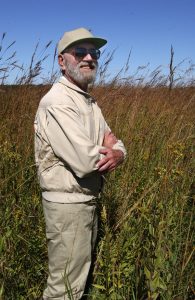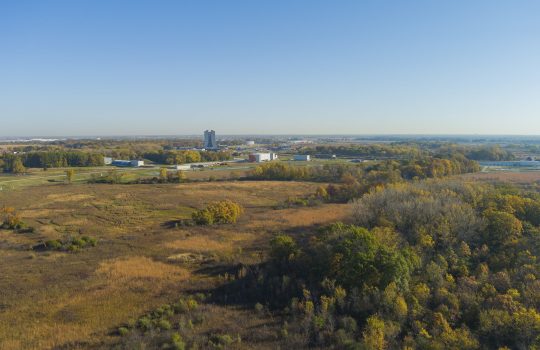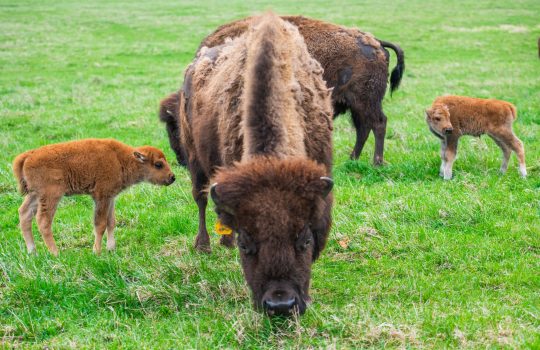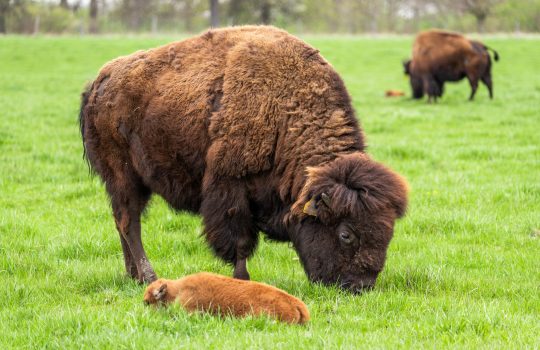Dr. Robert F. Betz was a biochemist. He was also a veteran of World War II and fought in the Battle of the Bulge. Dr. Betz was known, at Fermilab, for creating and overseeing the prairie planting project.
From the early 1970s until shortly before his death in 2007, Bob worked tirelessly with Fermilab Roads and Grounds to prepare, plant, burn and monitor the Fermilab prairies. Today, we have nearly 1,000 acres here. Species by species, year by year, Bob would collect and plant the seeds and advise the Prairie Committee on how to keep building. It was always to keep building prairie. He would tell us he had prairie fever, and, if we spent too much time with him, we would catch it as well. The only known cure, he said, was to see more prairie.
Bob Betz had an influence on hundreds of prairie projects in the Midwest, most notably here at Fermilab. He also touched the lives of tens of thousands, preaching the greatness and beauty of the nearly extinct tallgrass prairie. When I was a summer student with Roads and Grounds in 2002, I traveled with Bob Lootens, Mike Becker and Martin Valenzuela to a remnant prairie in Markham, Illinois. There, in the morning, we met with Betz to collect seeds from rare plants, growing in this never plowed prairie. After a few hours in the sun, we decided to go to the local Burger King for lunch. Betz didn’t want to go to the McDonalds, which was closer. As we placed our orders and waited, Lootens pointed to Betz. I looked to see him standing by the fountain drink dispenser with a large, empty cup in his hand. We watched as he placed the cup first under Coke, then root beer, and finally a splash of Dr. Pepper.
“He must be happy about the rare species we collected with that mix of pop,” Lootens leaned in and said. Betz turned around with his characteristic, large grin. Together, we laughed.
Today the prairies at Fermilab are named for Robert Betz. A plaque marking the dedication sits inside the Main Ring.




